|
Spooky Samhain Tales Did you know this year is the first full moon on Samhain in more than 20 years? Not only that, it’s a blue moon—the last blue moon on Halloween was in 1955 and the next won’t be until 2039! In fact, there’s only six full moons on October 31st this century. All I’m saying is, if we were ancient Druids, it would a particularly spooky and significant celebration this year. The ancient Irish never steered themselves away from the frightening in their mythology, and this impulse was only heightened around Samhain (Irish Halloween)—the time they believed the veil between the living and the dead, our world and the faerie world, was at its thinnest. While we briefly covered a few myths in our review of the history of Irish Halloween, there are plenty more where that came from. More than I think anyone would be comfortable with—especially at a foggy Irish crossroads on Halloween night with a full blue moon above them. Perhaps one of the best known of all Irish cryptozoological creatures is a Banshee (or “Bean Sídhe.”) Ironically, the banshee isn’t particularly dangerous for the average person—she only haunts those of noble Irish heritage. She never hurts anyone, though some believe she’s foretelling a death within the house she haunts her keening wail (or “caoine”) as she tears her hair, just as ancient mourners were wont to do. She often considered to be the counterpoint of the Leanan Sídhe—a faerie woman so beautiful she's inspired poets, artists and musicians to fall in love and create great art, only to leave them to die without their muse. Similarly, but perhaps more alarmingly, are tales of a creature called a Fetch (sometime “Taisé” or “Fáith”)—it’s said these apparitions predict accidents and deaths by taking the form of the person about to be hurt as a warning. Not surprisingly, the word “fáith” can also mean seer. Imagine seeing yourself in front of you, clutching at your chest or wet as if you fell in a river? Terrifying! Speaking of water, there’s plenty the Irish believe hide there as well. Just like there’s an underground faerie realm, there’s believed to be a concurrent “Land Beneath the Waves” (“Tír fo Thuinn.”) The best known escapees of this land are Merrows and Selkies—and no, the name doesn’t deceive—both myths are akin to our tales of mermaids. Merrows are human women from the waist up with fish tails and have a piece of clothing that allows them to breathe underwater, while Selkies are part-seal and only appear as beautiful women when they shed their skin. One can capture either as a bride if you steal their magic hat or seal skin, but Merrow or Selkie, they’ll always be longing and trying to return to the sea. But for all these tales that can’t necessarily hurt you, the Irish always have plenty of myths and monsters that can. Another sea monster is the Kelpie, a “water horse” (literally) that lures people to climb on its back so it can drown and eat them (for others they can appear as beautiful man or woman.) The Gray Man (or “Fear Liath”) personifies fog and confuses travelers so they stumble over cliffs to their deaths. Then there’s the Questing Beast, a bizarre, barking combination of animals (head of snake, torso of a leopard, back legs of a lion, but the hooves of a deer) that wreaks havoc and appears in Arthurian legends. And we can’t forget the Dark Man (“Fear Doirich”) and the Demon Bride…but those names are pretty self-explanatory and terror-inducing without the details.
Of course, this list of mythological beasts goes on and on—keep checking the blog for more stories! Just because October’s over doesn’t mean we don’t love a good tall tale. Or twenty. And don’t worry, the Irish have lots of protection beliefs as well—ones that have crept into our modern tales of ghosts, vampires, and monsters. Iron has always been believed to protect against the fey, as well as passing over running water or running into a graveyard. It’s also the origin of jack-o’-lanterns—originally turnips hollowed, carved with a terrifying face, hung from a stick, and filled with a glowing coal to scare away anything that had slipped away from the Otherworld. Once Christianity arrived in Ireland, holy water became the go to form of protection for people traveling on a dark Samhain night—carried by dipping pieces of straw in consecrated waters and holding it in front of them. Though there is still a definite faction in Irish culture that has a healthy respect for these mythological tales, the average person dismisses them as fantasy. So why create such scary creatures in the first place? It’s one of the most baffling things about humanity…why do we (well, some of us) love to be scared? The answer is surprisingly simple: it’s a safe and controlled way of confronting all those unknowns out there in the world. We can feel the rush of fear without the danger—our brain knows we’re safe. I mean…as long as the Gray Man doesn’t appear as we walk home at night. Then, all bets are off. This is Volume II of a series. Read our first installment about the Tuatha Dé Danann here. Check out the blog every Monday and Thursday (and the occasional Saturday) for more posts about Irish history, dance culture, community news, and spotlights on our dancers, staff, and families—among other fun projects! And don’t forget to dance along with us on both Facebook and Instagram.
0 Comments
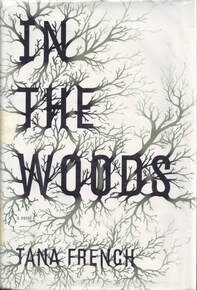 Volume III Adult Contemporary Fiction, Part I It’s 2020, and that means you’re still probably spending more time than you used to at home. What better time to actually start reading more? (You know you always say you’re going to.) The following are a few recommendations for books by some of Ireland’s best contemporary authors to help you make a start! Content warning: these books deal with a variety of adult topics and are only recommended for our parents and our oldest dancers! 1. In the Woods, Tana French This one is a bit of a cheat: Tana French is technically an American, but even the Irish have dubbed her the “First Lady of Irish Crime,” so I think it’s appropriate to include this long-standing resident of Ireland. The opening for French’s Dublin Murder Squad series (which don’t have the be read in any particular order) will be perfect for anyone who loves 1) true crime, 2) detective novels, and 3) a slow-burning mystery. The book follows the cynical voice of Rob Ryan as he and his partner, Cassie Maddox (narrator of the next book: The Likeness,) investigate the murder of a 12-year-old girl—a case that very well may be connected to Rob’s childhood. This critically acclaimed book is now a series titled Dublin Murders on Starz. 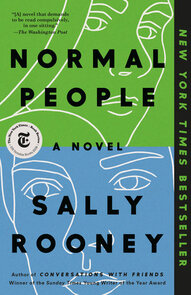 2. Normal People, Sally Rooney At only 29-years-old, Sally Rooney is the new wunderkind of adult contemporary literature with her two lauded novels: 2018’s Normal People and 2017’s Conversations with Friends. These are quietly psychological novels, concentrating on all the complexities tangling up the relationships of (in both cases) college students. In Normal People, we follow Connell and Marianne as they try to navigate their unspoken, but deep connection to each other as they grow out of their small town in County Sligo into something like adults while students at Trinity College in Dublin. This startlingly intimate book has been made into a hit limited series on Hulu, with Conversations with Friends optioned and due to start filming any day now. 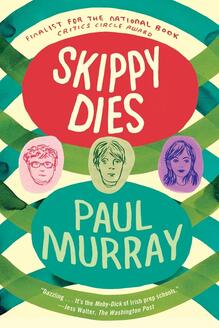 3. Skippy Dies, Paul Murray A darkly funny take on the classic boarding school novel, Paul Murray’s second book’s title reveals the crux of the entire plot: the main character, a 14-year-old boy named Skippy, falls down dead in a donut shop in the first few pages. The expansive novel (600 pages!) that follows retraces how we got there and deals with the aftermath of a grieving community in a tragic comedy full of everything from string theory to Celtic mythology, with plenty of biting satire in between. Long-listed for the 2010 Booker Prize, Skippy Dies is based on Paul Murray’s own time at an Irish all-male boarding school and it’s the interplay between that almost gothic setting with an adolescent coming-of-age story that creates its balanced tone and finds the humor in life’s inherent spots of darkness. 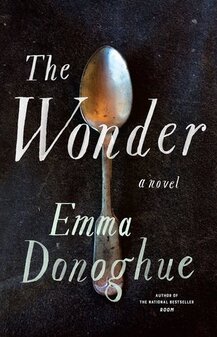 4. The Wonder, Emma Donoghue Emma Donoghue may be best known for Room (which was made into a movie that netted Brie Larson her Best Actress Oscar in 2015,) but The Wonder has a more distinctly Irish feel. Though set in 1859, the book metaphorically tackles something key to even the modern Irish identity: the relationship between the Irish and the English. The Wonder tells the story of an English nurse named Libby Wright who travels to a small Irish town to investigate a medical anomaly…or a miracle. The case is that of eleven-year-old Anna O’Donnell who hasn’t had a morsel of food for months, and the interest that springs up around her shapes itself into a slow-moving but deeply felt mystery that transforms all in its reach. Donoghue is a prolific, usually historical writer (this book is based on stories of “fasting girls” from the 16th-20th centuries,) but this is her first book actually set in her home country of Ireland. 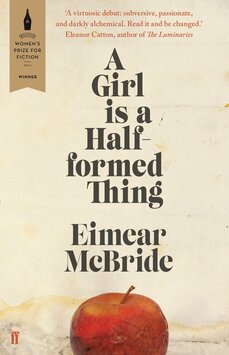 5. A Girl is a Half-formed Thing, Eimear McBride Eimear McBride’s debut novel has won many a prize and with good reason: A Girl is a Half-formed Thing was called “blazingly original” by no less than The New Yorker. While its unique style might make it a more challenging read for some, McBride tells her story through an almost stream-of-consciousness narrative poem that tackles the biggest possible topics: religion, abuse, illness, death, and even love. The reader exists intensely within the head of the unnamed, young, female narrator, brought along as she processes her brother’s childhood cancer and deals with her chaotic family life in an unspecified Irish town. With all the details stripped away, the book becomes somehow more Irish as its almost Joycean lyricism gets you closer to a sense of true identity than anything more neatly delineated—something felt rather than explainable. This is Volume III of a series, read Volume II about modern Irish slang here. Check out the blog every Monday and Thursday for more posts about Irish history, dance culture, community news, and spotlights on our dancers, staff, and families—among other fun projects! And don’t forget to dance along with us on both Facebook and Instagram. 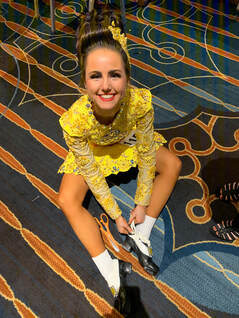 Name: Bailey Position: Instructor, assists all class levels How long have you been working at SRL? Why SRL? I have been working at SRL for the past month, and absolutely love it! SRL is an amazing community where all the dancers and teachers are very motivating, inspiring, and caring. How long have you been dancing? Why Irish dance? I have been dancing for 18 years! My mom chose Irish dance for me and my sister when we were very young to help express our Irish heritage. What’s the coolest place you’ve ever visited? (Remember travel?!) The coolest place I have ever visited was either Vancouver, BC or Edinburgh, Scotland. What are you interested in that most people aren’t? Math! I love math, as I am currently pursuing my graduate degree in Secondary Education with concentration in mathematics! Why do you think people dance? People dance to feel something and to express emotion. I dance because it made me feel strong, powerful, and motivated. What movie can you watch over and over and never get tired of? Why? Harry Potter (any of them!)… I am a huge fan! How has dance affected your everyday life? I cannot go a day without thinking about Irish dance, listening to Irish music, or dancing! What do most people not know about you? I have 2 different colored eyes. Who’s your biggest inspiration? Aly Raisman (2012 & 2016 Olympian) because she is such a hard worker, but also, she is a team leader and always wants success for her teammates. What advice do you have for aspiring dancers? Always be the hardest worker in the room; hard work goes a long way. This post is part of a series. Read our Q&A with another instructor, Codi, here. Check out the blog every Monday and Thursday for more posts about Irish history, dance culture, community news, and spotlights on our dancers, staff, and families—among other fun projects! And don’t forget to dance along with us on both Facebook and Instagram. Samhain It’s spooky season! Love or hate Halloween, October is undeniably the denizen of all things creepy, crawly, and sugar-filled all over the world. From the Día de los Muertos in Mexico and Latin America (on that note—if you and your kids haven’t watched Coco, there’s no better time than now!) to Guy Fawkes Night (or Bonfire Night) in England, it’s not just America that feels a need to celebrate as the days keep getting shorter, darker, and colder. But have you ever wondered where our Halloween traditions come from? Since you’re on an Irish dance blog, I bet you have a guess! The modern tradition of Halloween as we celebrate it in the United States stems from an ancient Celtic Pagan religious holiday called Samhain. Samhain (pronounced ‘sow’inn’) is a tradition as old as we can know—definitively dating back two millennia (and possibly a few more.) Celebrated from October 31st to November 1st, the festival marks the beginning of the “dark half of the year.” Samhain was believed to be the night where the barrier between the Otherworld (Tír na nÓg) was at its thinnest. As people finished up the last of their harvest work, they allowed their hearth fires to burn out before attending the communal celebrations. There, the Druid priests would use a wheel (something they utilized in their worship of the sun) to spark flames and light a community bonfire. Together, everyone would burn sacrificial bones (from the feast they were soon to consume) and tokens for their personal prayers for the colder seasons. After, every family would bring a flame from the big conflagration to relight their own hearth fires–perhaps a reminder of the constant support of their community before the darkest nights of the year. Samhain wasn’t just an excuse to gather together and ward away the cold. It was also a feast holiday before the difficulties of winter, and a way to honor deceased loved ones. Many houses would leave candles burning in their windows to light the way for spirits, and specific treats were blessed and left to appease them (it was considered extremely bad luck to eat any of that food before the night passed, though it was often given to the less fortunate the next day.) Some traditional treats include barmbrack—a sweet cake with tokens baked inside to tell your fortune—and “soul cakes” (essentially a precursor to cookies) left near the door for both the living and dead guests. But where good spirits can get through, so can bad. That’s where costumes come in! The tradition of dressing up (usually as an animal back then) is as old as the tradition of the bonfire, believing it was the best way for everyone to hide themselves from anything frightening that may have slipped through from the Faery world. Samhain was associated with a few scary creatures in particular, including: the Pooka (a shapeshifter—but watch out for the red eyes,) the Lady Gwyn (also known as the White Lady, who chases people out too late,) the Dullahan (something like our headless horseman,) and the Sluagh Sidhe (aka the “Wild Hunt,” a faery host who will try to make you join them in their eternal sport.) As times changed, so did traditions, especially as many Irish people settled in the New World. While we held on to the costumes, jack-o-lanterns replaced simple candles (though they were originally made from turnips!) and games and activities we’d recognize—like bobbing for apples, cider drinking, music, and all kinds of fortune-telling—became the norm. Even Mischief Night (a prank-filled tradition, mostly for teens, largely celebrated in Pennsylvania, Upstate New York, Michigan, and New Jersey) has its roots in Ireland—those who choose to wreak havoc the night before Halloween are simply taking the role of the mischievous faeries that have escaped from Tír na nÓg!
The connections of Halloween being particularly Irish doesn’t stop there--vampires as we know them in the 21st century are the product of two of Ireland’s finest. Bram Stoker was an Irishman and brought us almost all the lore we associate with vampires today with his book Dracula, taking his inspiration from the myth of the Dearg Due (a young, beautiful, blood-sucking woman.) Years later, another writer of Irish descent, Anne Rice, would bring vampires into the spotlight again with Interview with a Vampire and her many following books. So this Halloween, after the candy is hidden and the costumes in a pile on the floor, maybe take a moment to reflect on the forgotten reason we love to celebrate it: it’s one last moment of communal warmth before the cold settles in. While this Halloween may not look like others in the past, that feeling is the part that we can cherish and retain. And we have Samhain and the Celts to thank! This is Volume I of a series. Check out the blog every Monday and Thursday for more posts about Irish history, dance culture, community news, and spotlights on our dancers, staff, and families—among other fun projects! And don’t forget to dance along with us on both Facebook and Instagram.  Name: Jill L. Dancer at SRL: Irelyn How long has your family been with SRL? 7 Years Why Irish dance? I always loved watching it and wanted my daughter to just try it if I could find a class. My lucky day happened when I saw a sign for SRL in front of the South Windsor library that a new studio was opening in town. I was so excited! And here we are 7 years later! What did you want to be when you grew up when you were little? Why? I always wanted to be either a travel agent or a flight attendant. I shadowed a travel agent when I was in high school. I love to travel and planning is half the fun for me. I didn’t follow that path but am in the aerospace business so I guess I partly fulfilled that dream. How do you think dance has positively affected your dancer? It’s given her confidence in herself to be able to perform in front of large audiences. She is able to give herself goals to work towards and she knows that it will take time and hard work to achieve and is willing to put the effort in because she can see the progress happening. Favorite fall family activity? Watching football! What’s your favorite dance-related memory? St Patricks Day performance time, it is definitely crazy on some days, but it is so much fun! You get to travel to all different types of places to perform and it’s the one time of year that I get to see dancers perform that I haven’t seen in a while. And how much each dancer has learned over the year! 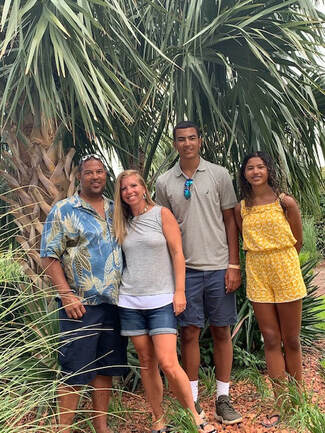 If your dancer were a fictional character, who would they be and why? She would be Moana, Irelyn not only resembles her, she has a big heart, a love of nature, the ocean and singing. If you could meet any historical or famous person, living or dead, who would it be and why? I would like to meet Walt Disney. I would love to see what his imagination was like and what his future vision was, and what he would think of how the Disney brand has grown to what it is today. What advice would you give parents who are looking to try out Irish dance? Irish dance is great because it is completely up to you and your dancer as to how involved you want to be. Competition and performances are optional or you can choose to compete every weekend if you want. It’s a unique skill to have and fun to get to show it off! What’s the most important quality to have in life? To have a positive attitude. There is not a lot that we have control over in life but choosing to look at the positive side definitely helps! This post is part of a series. See our Q&A with Natalie J.’s mom, Siobhan, here. Check out the blog every Monday and Thursday for more posts about Irish history, dance culture, community news, and spotlights on our dancers, staff, and families—among other fun projects! And don’t forget to dance along with us on both Facebook and Instagram. The Statue of Kilkenny and English Monarchs Just as the history of Ireland is rife with conflict, so is the history of Irish dance. It might sound dramatic (or a little bit too much like Footloose,) but there was a time in Ireland when Irish dance was essentially banned. Well…not for everyone. In the 14th century, the English began to feel they were losing the foothold on Irish soil they had gained in 1177 through a pact with the Normans (for more about them, see Volume I!) Scrambling, they took action by enacting the Statute of Kilkenny in 1366—35 laws banning anyone except the native Irish from partaking in Irish traditions. Among the many banned activities within the Anglo-Norman settlement were: riding horses “Irish style” (i.e. without a saddle,) listening to Irish storytellers, wearing an “Irish beard” (whatever that means,) marrying an Irish person, utilizing any Irish names or dress, and even playing any Irish games or music. While these laws didn’t expressly forbid Irish dance in so many words, the intent was clear: Irish culture (including dance) was only for the native Irish. However, you can’t keep a dancer from dancing. The fears of the English—so close but so far away without modern air travel—had come true: their settlers had become “more Irish than the Irish themselves.” In fact, these laws were so loosely enforced that they weren’t technically repealed until 1983! Besides, it wasn’t long before those back in England began to change their tune once they saw all that impressive footwork in person. No less than Queen Elizabeth I herself became a fan of Irish dance when Sir Henry Sydney wrote to her of girls he saw dancing jigs in Galway in 1569: "They are very beautiful, magnificently dressed, and first class dancers." After receiving the letter, the Queen reportedly invited and hosted Irish dancers at court.
And Queen Elizabeth I wasn’t the only English royal who sang the praises of Irish dance. Historians have found evidence that one of her successors, James II, was greeted upon his arrival to Ireland in 1689 with Irish dancers (though the trip didn’t go so well for him after that welcome.) These were the first steps (pardon the pun) of acceptance for Irish dance that has let the tradition travel beyond Ireland’s borders to become the worldwide celebrated art form it is today. This is Volume II of a series. Read Volume I here. Check out the blog every Monday and Thursday for more posts about Irish history, dance culture, community news, and spotlights on our dancers, staff, and families—among other fun projects! And don’t forget to dance along with us on both Facebook and Instagram. 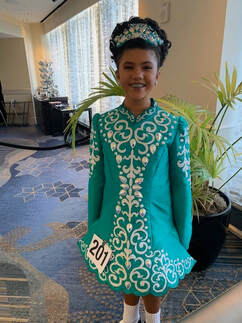 Name: Irelyn Age: 13 How long have you been dancing with SRL? 7 Years How did you get started with Irish dance? My mom has always loved Irish step dancing so she asked me if I wanted to try it. Then I fell in LOVE with it! If you could only eat one thing for the rest of your life, what would it be? Avocados! What do you daydream about? Going on vacation. What’s your favorite dance memory? The party we have before Oireachtas because I get to spend time with my friends and everyone is excited! What’s the best gift you ever received? Our trampoline. 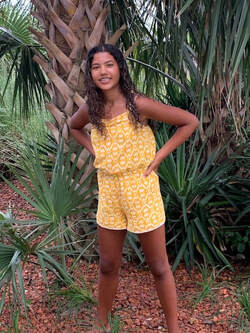 What’s your favorite thing about dancing? Learning new steps that are at a higher level or more difficult. If you were an animal, which one would you be and why? I would probably be a monkey because they like to have fun and so do I! Who do you look up to? I look up to my parents. What’s the best advice you can give a new dancer? If you are having a tough time with a step, don’t give up because you’re frustrated. Just focus and you’ll get it! This post is part of a series. See our Q&A with Natalie J. here. Check out the blog every Monday and Thursday for more posts about Irish history, dance culture, community news, and spotlights on our dancers, staff, and families—among other fun projects! And don’t forget to dance along with us on both Facebook and Instagram. 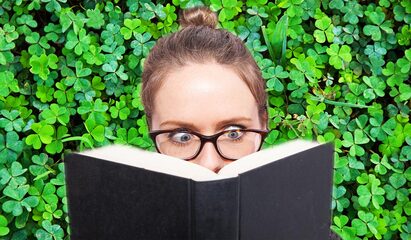 Volume II There’s nothing an American loves more than a UK accent. That being said, it doesn’t mean we can always understand everything they’re saying. While modern entertainment has brought British slang to the forefront (everyone knows what someone means when they hear “loo” or “boot,”) there’s still plenty of linguistic mystery when it comes to the Emerald Isle. Here’s a few choice phrases and some vocabulary (just in case we ever get to travel again, or so you can at least fully understand Irish TV shows in the meantime): How’s the craic? Craic translates to “fun,” but this common phrase is essentially a way of saying “what’s up?” or “how’s it going?” Pronounced crack. Jacks Just as the British have “loo,” and we have the bizarre (if you think about it) “restroom,” wherever they keep the toilets in Ireland are jacks. Wind your neck in! A vaguely (but not entirely) rude way of telling someone to be quiet, usually because they’re complaining too much, overstepping their bounds, or being generally difficult. Grand I know what you’re thinking, but this word has its own connotation in Ireland. It’s more of an equivalent to “fine” or “okay” with a touch of irony, and is apparently the most common answer to every question. Go away out of that. This one is often described as “untranslatable,” but it’s relatively similar to our non-literal version of “get out of here” with a unique grammatical structure. Kind of like a scoffing, “I don’t believe you,” or “you must be joking!” Bang on! A common way to express that something’s really, definitely correct. As in: “You’re bang on with that opinion, Irish dance is the best.” Sleeveen A sly, cunning, and manipulative person. What we might call a “smooth-talker.” He’s a topper. Turn of phrase usually used for a well-respected, younger man. We might say he’s a “stand up guy” or “a gentleman.” Lethal/Leefs In typical slang fashion, this is one of those words that means the opposite of what it sounds like (as in when surfers say “sick” or “gnarly.”) Basically translates to “cool.” The second option is just the abbreviated version. And this is only the beginning… Note: Just like in America, all slang presented above is regional. And just like America, it's difficult to figure out exactly where a singular word originates from when you're not living there. For this reason, regional information hasn't been included with this post. This is Volume II of a series, read Volume I about modern Irish snacks here. Check out the blog every Monday and Thursday for more posts about Irish history, dance culture, community news, and spotlights on our dancers, staff, and families—among other fun projects! And don’t forget to dance along with us on both Facebook and Instagram. 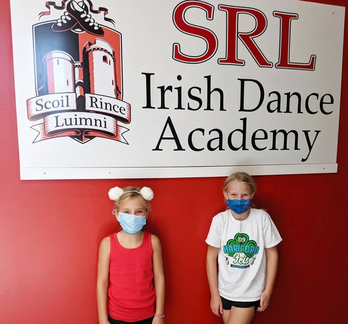 If you’re reading this, it’s fair to say that you’re probably browsing the SRL site. And if you’re browsing our site, you may be considering signing your child up for Irish dance. One of the most common questions any studio gets asked is: how old does my child need to be to start dance lessons? Our answer is always the same: If you can walk, you can dance! While dance has been proven to be beneficial to all age groups and we’ll never discourage an older student from beginning, there’s upsides to starting early. First of all, let’s acknowledge the elephant in every single room: it’s 2020, so your kids have been spending ALL their time with you. And as much as some extra family time has been the major benefit of this year, it does mean less opportunities for your child to develop a sense of independence and personhood, as well as for practicing social skills outside the home. There’s no “Mommy and Me” classes at SRL—we see even our Tiny Jig classes (for 2 to 3-year-olds) as a way for our students to not only learn to dance, but also: practice taking turns and sharing attention with others, being kind and respectful to peers and adults, learning about personal space boundaries, as well as a myriad of other not just social, but developmental skills they may not have a lot of chances to practice right now. Beyond the developmental benefits dance can foster, are the physical benefits. Our youngest classes concentrate not only on dance skills, but help improve motor skills, as well as help catch and correct any issues with right-left dominance. And, of course, it’s excellent exercise. (Especially during New England’s winter months!) Innumerable studies confirm that dance also improves cognitive ability and can led a better quality of life. Why? While there can’t be a downside to forging a mind-body connection early in development, dance classes also help kids practice patience, goal setting, and routine—all things that will benefit them in their future studies—as well as musicality. We’ve all seen the reports about how stimulating music is for the brain—why not develop that appreciation early? Additionally: if your child is already interested in dance, they may want to continue with it as they get older. Early dance classes aren’t a requirement, but they will lay a good foundation for your dancer’s success later on by instilling technique and creating a well-rounded dancer. In fact, it will be beneficial for any physical activity they choose—haven’t you heard the stories about NFL players taking dance classes to improve their coordination, flexibility, and footwork? With fewer children attending in-person preschool or even elementary, SRL’s dance classes provide a safe, socially distant space (with small class sizes to assure safety and close attention to all students and online options) for your kids to grow, learn, and play. It may not be easy right away—your kids may get discouraged or have the occasional tantrum or issues listening—but that’s what dance is about: learning, growing, and pushing through. Irish dance, like life, only has a couple moments of instant gratification…but isn’t that what makes real, earned successes all the sweeter? Here at SRL, students get moved up levels as soon as their skills have progressed, not by any specific age designation (that’s just to start!) Your child’s hard work is the only thing rewarded. And what better lesson to instill in your kids at a young age than that? Hear our Director, Courtney Jay, TCRG, discuss the benefits of our programs (for children as young as two!) here: This is our second Saturday bonus post! Check out our first here, all about battling back to school burnout. And check out the blog every Monday and Thursday for more posts about Irish history, dance culture, community news, and spotlights on our dancers, staff, and families—among other fun projects! And don’t forget to dance along with us on both Facebook and Instagram
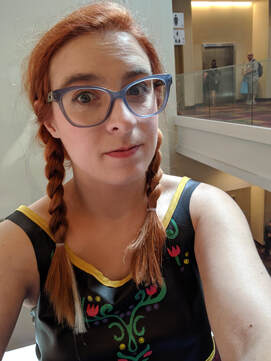 Does anyone recognize what princess Codi is cosplaying? Let us know in the comments! Does anyone recognize what princess Codi is cosplaying? Let us know in the comments! Name: Codi Position: Instructor: Tiny Jig, Pre-Beginner, Beginner, Adult classes What movie can you watch over and over and never get tired of? Why? Pretty much every Disney princess movie. They remind me of going to Disney world with my family when I was little and just always make me happy! What do most people not know about you? I cosplay once a year, dressing up as a twist on a Disney character and hanging out with other people who do the same. How long have you been working at SRL? Why SRL? 2.5 years, after college I stopped dancing because I couldn't find somewhere to continue but a few years later I found SRL's adult class. Once I was there, I got to talking to Courtney about my previous experience and that I had taught before. I started with subbing in some classes for her that year then started teaching full time that spring. It's a joy to be able to help the students develop all of their skills and watch them grow. How long have you been dancing? Why Irish dance? I’ve been Irish dancing for 19 years now. I chose it because at the time it was something new and exciting but continued because it was always a challenge to improve and learn new skills. How has dance affected your everyday life? It's a fun thing to connect with others about, and a little crazy sometimes to see how many people actually have some experience with something you might think is not as widespread! What’s your secret talent? Normally this would be the question I answer "Irish Step" to, but I don't think I can do that here, haha. My secret talent is that I can drive miniature horses. What’s the coolest place you’ve ever visited? (Remember travel?!) The coolest place I've ever visited is France. I was able to go up the Eiffel tower, walk down the Champs-Élysées, and visit Normandy. Why do you think people dance? I think people Irish dance to give them a fun challenge. The feeling of satisfaction after mastering something becomes a little addictive and drives you to accomplish more and more. Dance in general is also a great way to connect with others and form friendships. What advice do you have for aspiring dancers? There is always something to work on, whether or not what you’re practicing seems challenging. Add an element to keep improving, for example if you think your turnout is good, work on your upper body posture, holding yourself straight and keeping your arms still, while practicing your turnout skills. What’s the most important quality to have in life? Perseverance, the ability to continue to work towards what you want even if you're pushed backwards or have to find a new path. This is part of a series. Check out the blog every Monday and Thursday for more posts about Irish history, dance culture, community news, and spotlights on our dancers, staff, and families—among other fun projects! And don’t forget to dance along with us on both Facebook and Instagram. |
SRL NewsFind all of our latest news on our Scoil Rince Luimni Facebook page! Categories
All
Archives
August 2022
|
 RSS Feed
RSS Feed